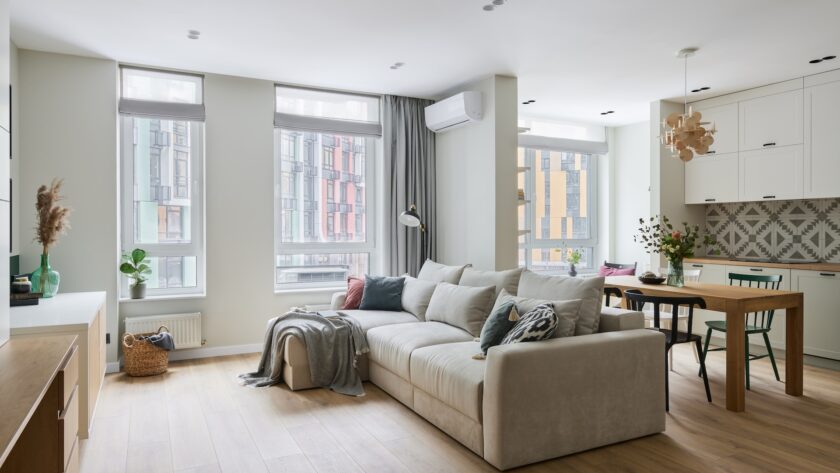Designing your home is an exciting opportunity to create a space that reflects your personal style and meets your functional needs. From defining your design style to considering layout and lighting, there are various factors to consider when creating the perfect home design.
In this blog post, we will explore valuable tips that will guide you in achieving a harmonious and well-designed home. By focusing on elements like color, materials, storage, and personalization, you can create a space that is aesthetically pleasing, functional, and uniquely yours.
Define your style
Begin by defining your design style, which serves as the foundation for your home design. Determine whether you lean towards modern, traditional, farmhouse, minimalist, or eclectic aesthetics.
Browse through design magazines, online platforms, and create mood boards to help clarify your preferences. By establishing your style, you can make informed decisions about furniture, colors, and accessories that align with your vision.
Plan the layout
Carefully consider the layout and flow of each room in your home. Take into account the functionality and purpose of each space. Arrange furniture in a way that optimizes the use of space and promotes easy movement between rooms.
Ensure that key areas, such as the kitchen, living room, and bedrooms, are strategically positioned for convenience and accessibility. A well-planned layout will enhance the overall functionality and usability of your home.
Focus on lighting
Lighting plays a crucial role in creating the perfect home design. Incorporate a combination of natural and artificial lighting sources to set the desired ambiance. Utilize ample windows to bring in natural light, and consider window treatments that allow for adjustable privacy and light control.
Complement natural light with well-placed artificial lighting fixtures, such as ceiling lights, pendant lights, and task lighting. Layering different types of lighting creates depth and functionality, enhancing the overall aesthetic appeal of your home.
Color palette selection
Choose a color palette that sets the tone for each room and reflects your personal style. Consider the psychological impact of colors and how they influence mood and perception. Opt for cohesive color schemes that create a harmonious flow between spaces.
Experiment with different shades, tones, and complementary colors to achieve the desired atmosphere. Keep in mind that lighter hues can make spaces appear larger, while darker shades create a cozy and intimate feel. Don’t be afraid to infuse pops of color through accessories and accent pieces to add visual interest.
Pay attention to materials and textures
Incorporate a variety of materials and textures to add depth and visual interest to your home. Mix elements such as wood, metal, glass, textiles, and stone to create a multi-dimensional and inviting space. Consider the texture of materials to create contrast and tactile appeal.
For instance, pair smooth surfaces with rough textures or soft fabrics with sleek metals. This interplay of materials and textures adds richness and creates a visually captivating environment.
Personalize with decor
Infuse your personality into your home design through carefully selected decor items. Display artwork, photographs, and personal collections that hold meaning to you. Use accessories, such as throw pillows, rugs, and curtains, to add pops of color and pattern.
Incorporate indoor plants to bring life and freshness to your space. Don’t forget about meaningful mementos and cherished items that can serve as conversation starters and add character to your home.
Consider storage solutions
Maximize storage space to maintain an organized and clutter-free environment. Incorporate built-in cabinets, shelves, and closets to make the most of your available space.
Utilize creative storage solutions such as under-bed storage, floating shelves, or multifunctional furniture to optimize storage capacity. Customized storage options can be designed to fit specific needs, ensuring everything has its place while maintaining a clean and organized look.
Balance open and private spaces
Create a balance between open communal areas and private spaces in your home. Designate areas for relaxation, privacy, and personal retreats, while maintaining an open and connected feel throughout.
Use architectural elements like room dividers, sliding doors, or curtains to create flexible spaces that can be adapted to different needs. This balance ensures that your home caters to both social gatherings and personal moments, fostering a harmonious and functional living environment.
Consider investing in solar energy
One of the major considerations that sustainable homeowners are now taking into account is investing in solar energy. By installing the best solar panels Utah has to offer, homeowners can not only save money on their energy bills but also reduce their carbon footprint.
In addition to the financial and environmental benefits, solar panels can also enhance the aesthetic appeal of a home, adding a sleek and modern touch. Ultimately, incorporating solar energy into the design of a home is a decision that can improve both the functionality and overall value of a property.
Conclusion
By following these tips, you can embark on creating the perfect home design that aligns with your style and meets your functional requirements. From defining your design style to incorporating personalized touches, attention to layout, lighting, and storage, you can transform your house into a welcoming and harmonious home that reflects your unique personality and preferences.




